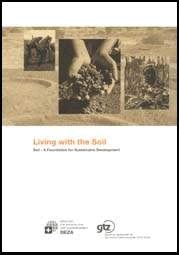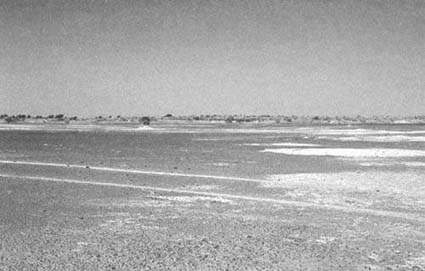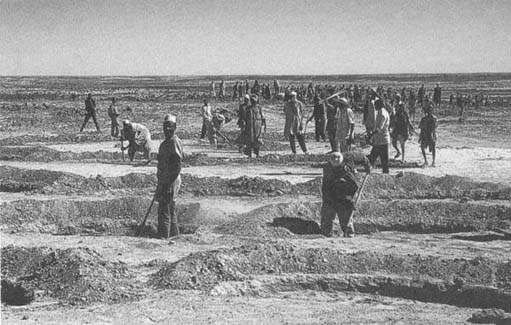
Soil: A Global Actor[edit | edit source]
We still tend to see the soil as a local phenomenon. We associate it with the human qualities of being loyal to the land, in touch with oneÂ's roots, and down-to-earth. In certain respects this is true, because sustainable and productive soil management can only be put into practice locally, on the land and on the farm. Nevertheless, we should not overlook the fact that since the earth came into being, the soil has been one of the key Â"global playersÂ". It is a key factor in regional and global processes in several respects.
Many of these links have only fully come to light as a result of research programmes conducted in recent years. Knowledge is still limited, and needs to be further expanded. It is therefore hardly surprising that the links between the soil and global themes are often underestimated. Here, a reorientation in thinking is slow to emerge. Yet increasing numbers of people are calling for binding international agreements to protect the soil, like those which exist to protect the climate or biodiversity.
|
Niger: Tillab�ry Local Development Programme More than 50 years ago, the valley floors in the Tillab�ry-T�ra region were sparsely settled by sedentary pastoralists. Rapid population growth and long periods of drought took their toll on the fragile equilibrium of this system. Less and less land was left fallow and the cultivable land was extended to marginal zones. Today, the soil is bare and covered by a crust which is impermeable to water, preventing infiltration by rain water and thus aggravating periodic droughts. The Tillab�ry Local Development Programme, supported by the Swiss Agency for Development and Cooperation (SDC), assists the farmers of the region in setting the priorities and the framework for interventions by the programme themselves. Since chronic famine prevails in the region and food security is the greatest concern, the establishment of granaries was a first step towards better provision of millet. Further steps include the introduction of soil conservation measures, and application of organic and some mineral fertiliser to increase productivity. Diversification of crops, especially in the wetter valley bottoms, is designed to increase the level of self-sufficiency, and to alleviate the pressure on the marginal upland soils. As agricultural incomes are low, farmers intend to spend an increasingly significant portion of their time on off-farm income generation. Consequently, major interest is being focused on small-scale enterprise, artisanal activities and other sources of income. The programme is supporting these activities by assisting farmers in reviewing, planning and implementing small-scale projects that have emerged on the basis of the farmersÂ' own priorities. The programme sees itself as a catalyst, facilitating the emergence of groups and village associations, and offering support to actors in the realisation of activities on terms established by those actors. The first results are encouraging, as within only six months, more than 180 applications for support have been received by the various village offices set-up for that purpose. Parallel to these activities, the programme has stimulated a process of strategic thinking among the population. Topics covered include corridors for cattle, watering point management, school education, communication and conflict management.??? |
Soil degradation is usually not confined to a single parcel, but affects entire regions and large areas. Cumulative effects arise which are difficult to monitor.
The water balance provides one example. Precipitation percolates damaged soils to a lesser extent, and is barely stored there. It flows rapidly off the surface, and in so doing erodes the soil, causing sedimentation in artificial lakes, or siltation on roads and settlements. Further downstream in the plains, flooding increases - with the potential to cause enormous damage, as has occurred time and time again in Bangladesh.
Soil erosion is not the only problem. In dry regions where soil is not managed sustainably, desertification is advancing, caused by the simultaneous degradation of soil, vegetation cover and water balance. The potential agricultural utility of the affected areas suffers lasting damage. Periods of drought impact more severely on humans and animals. The damage can only be repaired in the long term, if at all. Reestablishing intact vegetation cover can take decades.
Soil degradation also affects the maintenance of biodiversity and climate protection, two further global tasks. If a regionÂ's soil loses fertility and is also less able to retain water, the vegetation changes. Hardier plant species survive. Others die out, and with them the animals and organisms dependent on them. Biodiversity is reduced.
Soils also play a major role in the global carbon balance, because they are able to Store significant quantities of CO2. This is released into the atmosphere in the course of degradation processes, and exacerbates the greenhouse effect. As well as CO2, degraded soils also release significant quantities of the greenhouse gas methane.


